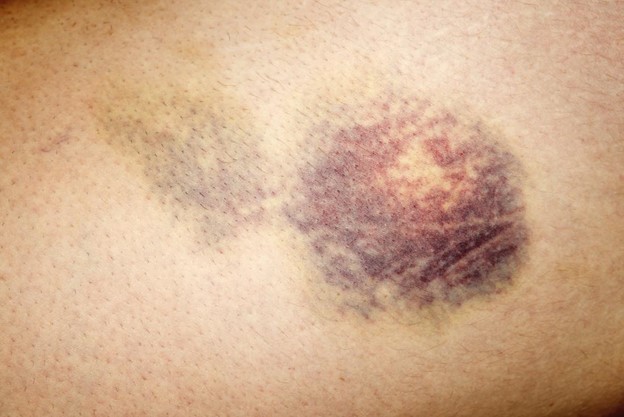A nurse is caring for a newborn whose mother was taking methadone during her pregnancy.
Which of the following findings indicates the newborn is experiencing withdrawal?
Acrocyanosis
Bradycardia
Bulging fontanels
Hypertonicity
The Correct Answer is D

Hypertonicity is a sign of increased muscle tone and stiffness, which can indicate that the newborn is experiencing withdrawal from methadone exposure in utero. Methadone is an opioid medication that can cross the placenta and cause neonatal abstinence syndrome (NAS) in the newborn.
Choice A, acrocyanosis, is wrong because it is a normal finding in newborns.
Acrocyanosis is a bluish discoloration of the hands and feet due to immature peripheral circulation. It usually resolves within the first 24 to 48 hours of life.
Choice B, bradycardia, is wrong because it is not a typical sign of withdrawal.
Bradycardia is a slow heart rate, usually less than 100 beats per minute in newborns. It can be caused by hypoxia, hypothermia, hypoglycemia, or vagal stimulation.
Choice C, bulging fontanels, is wrong because it is a sign of increased intracranial pressure, not withdrawal. Bulging fontanels can be caused by meningitis, hydrocephalus, or hemorrhage.
Normal ranges for newborn vital signs are as follows:
- Heart rate: 120 to 160 beats per minute
- Respiratory rate: 30 to 60 breaths per minute
- Temperature: 36.5 to 37.5°C (97.7 to 99.5°F)
- Blood pressure: 60 to 80 mm Hg systolic and 40 to 50 mm Hg diastolic
Nursing Test Bank
Naxlex Comprehensive Predictor Exams
Related Questions
Correct Answer is {"dropdown-group-1":"C","dropdown-group-2":"C"}
Explanation
The nurse should first administer oxygen at 2 L/min via nasal cannula because the client has signs of hypoxemia (low oxygen saturation) and respiratory distress (increased respiratory rate) that may worsen the chest pain and myocardial ischemia. Oxygen therapy can help improve oxygen delivery to the heart muscle and reduce the workload of the heart.
The nurse should then administer sublingual nitroglycerin as prescribed because nitroglycerin is a vasodilator that can help relieve chest pain by dilating the coronary arteries and improving blood flow to the heart. Nitroglycerin can also lower blood pressure and reduce cardiac preload and afterload, which can decrease myocardial oxygen demand.
Other choices:
• Prepare the client for cardiac catheterization: This may be a later intervention if the chest pain persists or if the client has a confirmed myocardial infarction, but it is not the first priority for the nurse. Cardiac catheterization is an invasive procedure that involves inserting a catheter into a large artery and advancing it to the coronary arteries to visualize any blockages or stenosis. The procedure may also involve angioplasty or stent placement to restore blood flow to the affected area.
• Request a prescription for an increase in statin: This may be a long-term intervention to lower the client’s LDL cholesterol and prevent further plaque formation in the coronary arteries, but it is not an immediate intervention for chest pain. Statins are lipid-lowering drugs that can reduce the risk of cardiovascular events in clients with CAD, but they do not have a direct effect on chest pain or myocardial ischemia.
• Check a STAT cardiac troponin: This may be a diagnostic test to confirm or rule out a myocardial infarction, but it is not an intervention for chest pain. Cardiac troponin is a protein that is released into the bloodstream when there is damage to the heart muscle. Elevated levels of cardiac troponin indicate a myocardial infarction or other cardiac injury.
• Request a prescription for a beta-blocker: This may be an adjunctive therapy to reduce chest pain and prevent complications, but it is not the first-line intervention for chest pain. Beta-blockers are drugs that block the effects of adrenaline on the heart and blood vessels, which can lower heart rate, blood pressure, and myocardial oxygen demand. Beta-blockers can also prevent arrhythmias and reduce mortality in clients with CAD.
Correct Answer is B
Explanation

A hematoma is a collection of blood outside a blood vessel that can cause swelling, pain, and bruising. It can indicate bleeding from the artery where the catheter was inserted, which can be a serious complication of cardiac catheterization.
The nurse should notify the provider immediately if a hematoma is observed.
Choice A is wrong because heart rate 90/min is within the normal range for adults and does not indicate a complication.
Choice C is wrong because bounding pulses in the affected extremity are expected after cardiac catheterization, as they indicate good blood flow to the area.
Choice D is wrong because report of discomfort at the insertion site is common and usually mild after cardiac catheterization.
The nurse can provide pain relief as needed, but does not need to notify the provider unless the pain is severe or persistent.
Normal ranges for heart rate are 60-100 beats per minute for adults. Normal ranges for blood pressure are 120/80 mmHg or lower for systolic pressure and 80 mmHg or lower for diastolic pressure. Normal ranges for oxygen saturation are 95-100% for adults.
Whether you are a student looking to ace your exams or a practicing nurse seeking to enhance your expertise , our nursing education contents will empower you with the confidence and competence to make a difference in the lives of patients and become a respected leader in the healthcare field.
Visit Naxlex, invest in your future and unlock endless possibilities with our unparalleled nursing education contents today
Report Wrong Answer on the Current Question
Do you disagree with the answer? If yes, what is your expected answer? Explain.
Kindly be descriptive with the issue you are facing.
